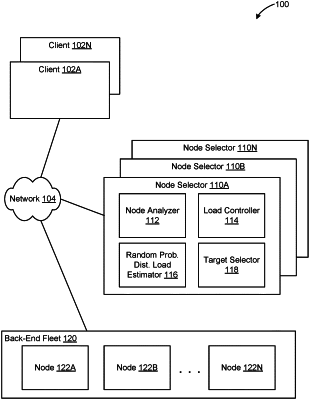| CPC H04L 43/062 (2013.01) [H04L 43/0817 (2013.01); H04L 43/0882 (2013.01)] | 20 Claims |

|
1. A system comprising:
a computer system that includes a plurality of nodes and that is configured to provide a service; and
a compute node coupled to the plurality of nodes and configured to:
determine, based at least in part on a performance requirement associated with providing the service, a configuration indicating a type of performance measurements to report to the compute node;
request, based at least in part on the configuration, at least a first node and a second node of the computer system to send load reports to the compute node;
select the first node as a target and at least the second node as a control to determine a performance limit that indicates a maximum load that can be processed within a unit of time while meeting the performance requirement, wherein the first node is to handle a larger load than the second node based at least in part on the first node being selected as the target and the second node being selected as the control;
receive a plurality of client requests for the service;
send first client requests of the plurality of client requests to the first node based at least in part on the first node being the target, the first client requests corresponding to a first load;
send second client requests of the plurality of client requests to the second node, the second client requests corresponding to a second load that is smaller than the first load;
receive, from the first node, a first load report indicating a first performance measurement associated with processing of the first load by the first node;
receive, from the second node, a second load report indicating a second performance measurement associated with processing of the second load by the second node;
determine, based at least in part on the first load report and the second load report, a performance error of the first node relative to the performance requirement;
determine the performance limit based at least in part on the performance error; and
trigger an action based at least in part on the performance limit.
|